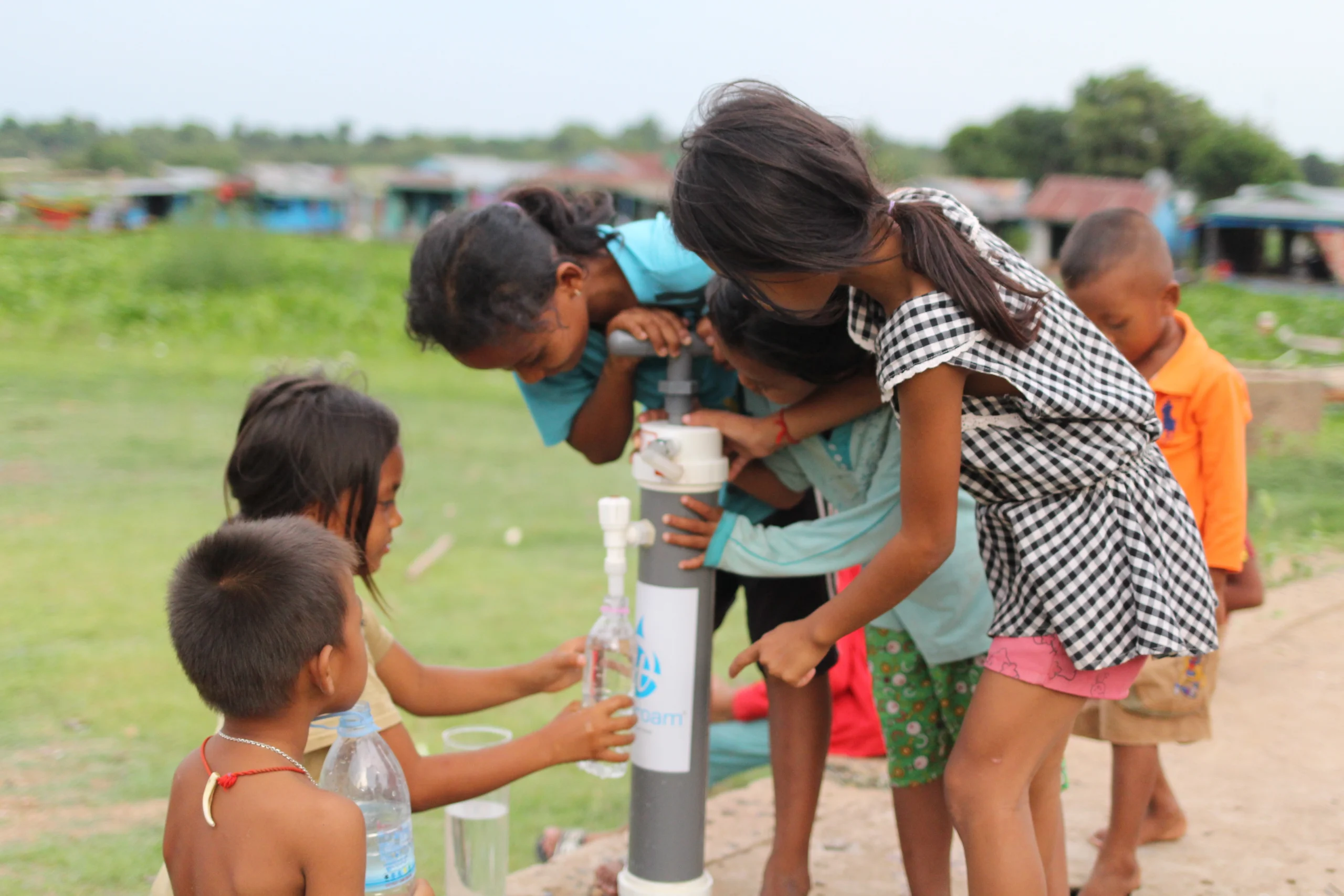Non-Government Organizations or NGOs are the lifeblood of charity and social justice work around the world. According to the United States Department of State, as of January 2025, 1.5 million NGOs operate in the United States alone. These 1.5 million NGOs include but are not limited to faith organizations, labor unions, and philanthropic foundations that work towards creating a better future and empowering those in poverty or marginalized groups.
However, there is an incredible amount of work that occurs inside NGOs that the public does not see. These inner workings include how NGOs sustain themselves during times of crisis, including environmental and economic crises, as well as during times of relative peace through federal and private funding. With the ever-changing tides of the climate and water crises, as well as the economic damage that these crises bring with them, sustainability efforts must evolve and improve.
Today, we will explore the inner workings of NGO sustainability, funding courses for NGOs, and strategies for making your NGO more sustainable in the evolving world of 2025, as well as offer suggestions for individuals to get involved on a personal level.
What Is An NGO?

A Non-Government Organization, or NGO, is a private non-profit that operates independently from a governmental entity. Despite being a nonprofit, NGOs have a distinct classification that sets them apart from other nonprofit organizations.
NGOs are large-scale charity organizations that work to address large-scale, global issues. Examples of this would include the American Red Cross, an international organization that focuses on supporting and relieving communities that have been adversely affected by natural disasters and humanitarian crises. This is an all-encompassing goal and reaches the far corners of the earth.
Nonprofits work on a much smaller scale, usually focusing on providing food, healthcare, housing, and other charitable opportunities to specific and local communities. Prominent examples of a non-profit would be local food banks and housing trusts.
Due to the nature of both nonprofits and NGOs, providing the resources and opportunities for a better future that they do, it is imperative that these organizations receive the necessary funding in order to sustain themselves and their missions. Nonprofits sustain themselves through meeting local needs, receiving local support, and sending grant proposals. NGOs, operating on a much larger scale, must defer to trendier practices regarding the three pillars of sustainability: Economic, Environmental, and Cultural Sustainability.
Economic NGO Sustainability
The first and most immediately important pillar of NGO sustainability is Economic Sustainability. According to Humentum, a global NGO focused on sustainable business models for socially positive organizations, there are four main ideas to keep in mind when creating an economic plan for an NGO:
- Strong stakeholder support: It is important to gain the support of local communities that are primarily affected through the NGO’s efforts and keep in contact with these communities, not only through the leadership running them, but through the people themselves. These communities are what keep organizations moving and growing. It is imperative for an NGO to keep positive stakeholder relationships within its communities.
- Diversified income: Relying on one source of income for an entire organization is incredibly risky and will not work out in the long run, more often than not. It is paramount to the cause to keep a diversified income to make sure that there is money coming in from multiple sources. For example, while writing grant proposals, acquiring government funding, and partnering with local businesses, an organization focused on assisting women and children in a community could sell handmade crafts made by the people they are assisting. This can also be bolstered by using social media accounts to spread word of the organization, their mission, and funding opportunities.
- Unrestricted funds: While restricted funds can be good for an organization, as all funding can be good for an organization, they can only be used for a certain amount of time for certain projects. Acquiring unrestricted funding can boost an NGO to the next level by giving an amount of money that can be used for anything within the organization, adding much needed flexibility that can aid in the organization’s goals.
- Reserves: Reserves refer to financial reserves that the organization sets aside in the case of unforeseen circumstances that result in funding running short. An example of this would be a delayed grant. Financial reserves are akin to a large-scale “rainy day fund”, unrestricted funding and money to be used when absolutely necessary to keep the NGO from falling into a vulnerable financial position that it may not be able to climb out of.
Environmental NGO Sustainability
The second pillar of sustainability is Environmental Sustainability. This pillar can mean various things. Environmental Sustainability can allude to environmental factors within a community that the NGO operates in that generally affect the NGO, such as attitudes toward the NGO, poverty, and leadership within the community, among other things.
Environmental Sustainability can also allude to the literal environment, with the climate crisis and changing climate in mind. A community adversely affected by the climate crisis, by way of droughts, flooding, and other environmentally damaging tragedies, will affect the NGO in both financial funding and the work that the organization aims to achieve.
Both of these interpretations of Environmental Sustainability affect the ways in which funding gets to the organization:
- The first interpretation, Environmental Sustainability through the environment of the community, is directly related to stakeholder relationships, as mentioned before, and keeping those relationships positive and mutually-beneficial for both the community and the NGO.
- The second interpretation, Environmental Sustainability through the literal environment, affects NGO sustainability by pushing the NGO to be involved in environmental resilience efforts. This can be done in a variety of ways, such as by assisting communities in cleaning up tangible effects of a climate catastrophe or by providing aid to a destabilized community in the face of a climate catastrophe, and by implementing environmental resilience tactics in the rebuilding efforts.
Cultural NGO Sustainability
The third pillar of NGO sustainability comes in the form of Cultural Sustainability. Cultural Sustainability refers to keeping your NGO in the public eye and sustaining positive public relations not only with communities that your NGO involves itself in, but also on a global scale to gain goodwill amongst benefactors, grant-givers, and communities worldwide. Cultural Sustainability has become much more effective within the past thirty years with the rise of the internet and globalization, as well as the wide amount of easily available information that comes with it.

Cultural impact comes in various forms through the rise of easily available information. NGOs make cultural impacts within the communities they aid, and these cultural impacts can be amplified via social media websites, business website posts, and blog posts. The more NGOs use trendier tactics to boost themselves culturally, the more attention they can receive, which leads to more good work done by the NGO. It’s a positive feedback loop of information and action. This positive feedback loop can also be bolstered by partnering with other NGO’s and organizations, creating goodwill and stability for your NGO.
Keeping up with the ever-changing climate of internet trends and interests can keep an organization culturally relevant to a larger audience outside of the communities the organization engages with. For example, NGOs can curate trendy Instagram feeds that mix in with posts about their cause to keep a positive brand image for the general population. This positivity can lead to more people becoming interested in your NGO’s brand and identity, which can lead to more active participation.
GIS: A 2025 NGO Sustainability Practice
NGO sustainability is based on a system of support from various sources. In order for your NGO to sustain itself, the organization needs to exhaust every source and option for funding it can. These sources range from government funding to funding from other organizations to civilian support. Data for this kind of support can be found, analyzed, and organized through a Geographic Information System, or a GIS.

A GIS is a data management system that focuses on a variety of concepts within a certain area. The word “Geographic” produces images of a physical landscape, which is a part of the GIS analytical system; however, GIS also focuses on potential funding and resources that can be found through land usage, how the land is divided, and the demographics within the area.
This sort of organization of data allows for your NGO to become more organized in its marketing efforts in its target area, and allows for more opportunities for how the NGO will operate. Through the gathering of demographic and environmental data, your organization will be able to predict current and future trends and be able to follow them seamlessly. The GIS data model provides optimal efficiency for your NGO.
Not only does GIS assist with marketing needs, but it also assists with acquiring funding through the transparency it provides. Through GIS, people funding your NGO will be able to see exactly where their money is going, in addition to the tangible effects of their funding that might be seen in the future.
Supporting, sponsoring, and funding NGOs can take many forms. Don’t hesitate to get involved with new technologies to keep your NGO modern and trendy – every contribution counts!
Frequently Asked Questions
What is the main difference between an NGO and a Nonprofit?
The main difference between an NGO and a non-profit is that nonprofits generally work on a smaller scale. Non-profits are more commonly aligned to a very specific goal, such as housing or food banks, and acquire funds through grants and donations that go directly to the organization’s purpose.
NGOs are much larger in scale and focus more on broad goals of supporting health initiatives or women’s and children’s rights worldwide. NGOs also acquire funds through grants, donations, and government donations; however, the organization operates more similarly to a company.
How does GIS gather data?
GIS uses surveillance technology to find and collect. geographical, environmental, and cultural data of an area. Geographical and environmental data are captured via the use of satellite imaging and aerial photography. Cultural demographic data is captured via the use of in-person surveillance and surveying of an area, which is more time-consuming for the organization, but produces high-quality results, contributing to NGO sustainability.
How can I partner with other NGOs?
There are many ways to get involved with an NGO of your choice. The most significant ways to partner your NGO with another organization are through open communication and alignment of interests. This partnering of one organization with another not only provides your NGO with positive reputability with stakeholders but also creates a strong support system for your NGO in times of financial crisis.
To find vetted and professionally recommended NGOs to get involved with, visit the Business Connect Organization Database.
Visit Our Website to Purchase Our Products
NGO sustainability is a topic with an ever-changing landscape. As culture, economies, and environmental resilience programs move forward, these trends and practices will move with them.
However, despite all these changes, there are two definitive ways to support NGOs that are timeless: donating to the cause and getting involved!
To learn more about Business Connect’s cause, goals, and how to get involved, visit our Mission page. To learn more about our life-enhancing products, visit our Shop page.



